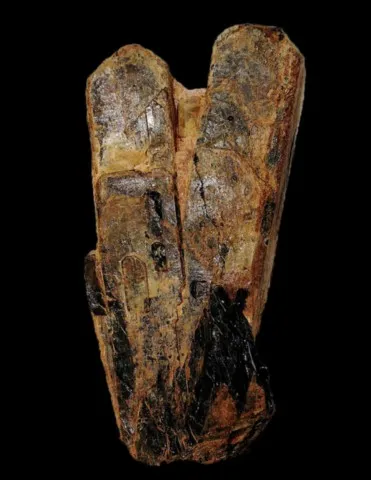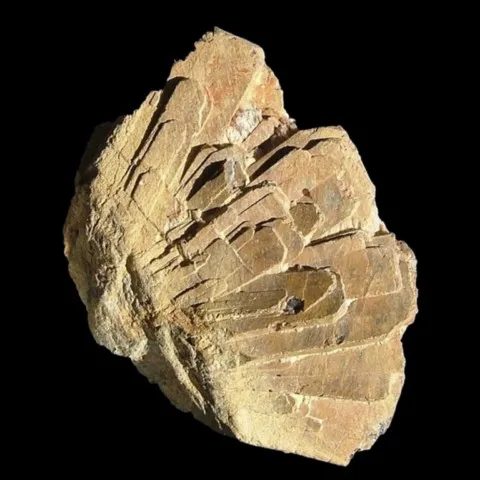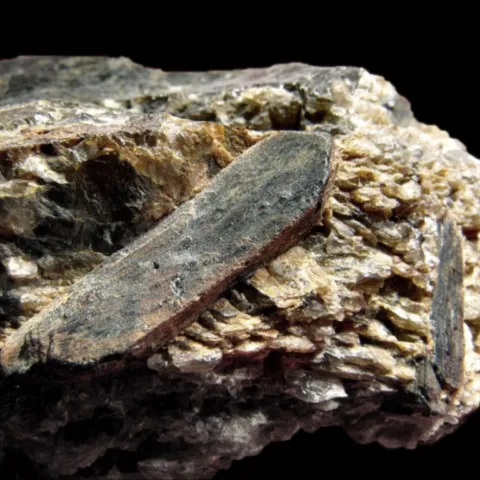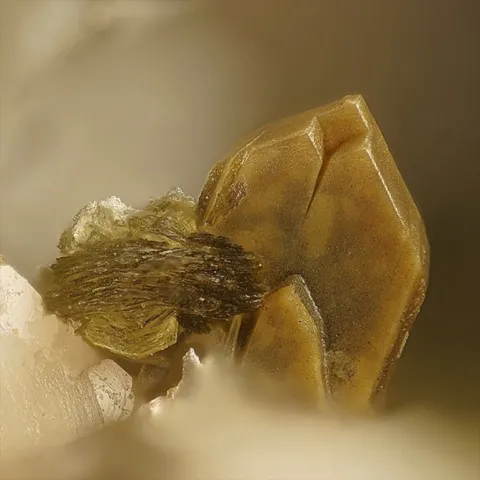 Euxenite - Encyclopedia
Euxenite - Encyclopedia
EUXÉNITE
Class : Oxides and hydroxides
Subclass : Oxides
Crystal system : Orthorhombic
Chemistry : (Y,Ca,Ce,U,Th)(Nb,Ta,Ti)2O6
Rarity : Very rare
Euxenite is primarily a mineral of granites and granitic pegmatites, as well as pegmatites associated with nepheline syenites. It is a complex oxide of titanium, tantalum and niobium, which forms a series with polycrase, where titanium dominates. Substitutions between elements are numerous, and euxenite is frequently rich in uranium, thorium and less common rare earths (dysprosium, erbium or ytterbium). Although frequently metamict, it is a very resistant mineral which concentrates well in alluvium. Its name comes from the Greek eu (good) and xenos (foreign) due to the large number of rare elements used in its composition. Euxenite appears in stocky prisms, sometimes flattened, with faces frequently striated longitudinally. They are often gathered in parallel or subparallel groups, slightly radiate or flabelliform ; they also form metamict masses. Euxenite is reddish-brown or dark brown to black in color, but this is often masked by a thin crust of alteration (metamictization) of light yellowish brown. The conchoidal break reveals a tarry appearance, very characteristic of the mineral. Euxenite from Malagasy deposits was exploited as uranium and radium ore at the beginning of the century. Heavy Ilsenite sands remain potential rare earth and thorium ores.
Main photo : Euxenite from Betsiboka, Madagascar © Knut Eldjarn
Euxenite in the World
Twinning
Twins are known on {201} and common (flattened and striated). Perhaps present on {101} and {013} but rare.
Fakes and treatments
No fake listed for this mineral species.
Hardness : 5.5 to 6.5
Density : 5.3 to 5.9
Fracture : Conchoidal to sub-conchoidal
Streak : Yellow, gray or brown-red
TP : Translucent to opaque
RI : 2.06 to 2.24
Birefringence : 0
Optical character : None
Pleochroism : None
Fluorescence : None
Solubility : Acids
Magnetism : Paramagnetic
Radioactivity : Medium





